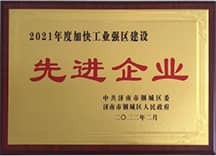What are the factors affecting the durability of building plastering mortar? How to improve?
The durability of plastering mortar plays an important role in building quality. The main problems of building plaster mortar include dropping powder, cracking and empty drum. In order to improve the durability of building plastering mortar, it is necessary to deeply analyze the factors affecting the quality of plastering mortar and put forward effective solutions.
With the development of construction industry, the durability of cement concrete construction has been paid more attention. In the view of present situation, the consumption of building mortar is one-third of the total cement production in our country, but there are many hidden problems in the durability of building mortar, which lead to many quality problems, including falling powder, cracking, and empthrum.
01Analysis of factors affecting the durability of building plastering mortar
1.1 Analysis of the reason of plaster mortar powder dropping
The density of wet mortar is used to represent the air content in building mortar, and the mass ratio of cement sand is used to represent the cement content in mortar. The relationship between the density of wet mortar and the compressive strength of mortar is shown in FIG. 1.
The relationship between the quality of mortar and the compressive strength of mortar is shown in FIG. 2.
As can be seen from Figure 2, with the decrease of mortar density, the compressive strength of mortar will gradually decrease. Through this phenomenon shows that each ton of dry mortar can ensure the amount of cement 250kg, while adding a certain amount of air entraining agent can improve the construction performance of mortar, can ensure that the mortar has a certain strength. The quality of mortar sand will also affect the durability of mortar. The compressive strength of mortar will decrease when the ratio of cement to sand mass of mortar increases. At present, the field of mixing plaster mortar has not yet formed quantitative requirements, the technical indexes of construction technology of construction personnel will also affect the durability of mortar and plaster mortar to the rendering of large area, but some in the engineering construction, construction personnel only attaches great importance to the performance and fuel economy of construction projects, mainly by increasing sand parameters to enhance the construction performance, but the results lead to the decrease of strength of sand .
1.2 Cause analysis of plaster mortar cracking
Compared with the pure cement mortar, the cement content in the cement mortar in the factory is low. Many factories use fly ash instead of cement, which not only reduces the density of the mortar, but also reduces the compressive strength of the mortar. Most of the fly ash used in optimized mortar is modified fly ash, which can not only improve the reactivity of fly ash, but also improve the strength of mortar. However, the strength of optimized mortar decreases obviously due to the incorporation of air entraining agent. The shrinkage rate of mortar is also affected by curing time. In general, free shrinkage mortar will not crack, but once the mortar is constrained, it will produce the corresponding tensile stress, when the tensile stress exceeds the tensile strength of the mortar will produce cracking.
02 Analysis of the main strategies to enhance the durability of building plastering mortar
2.1 Strengthen the control of mortar strength grade
To improve the durability of building plaster mortar, the strength grade of mortar should be controlled on the basis of good construction performance, and the shrinkage rate and elastic modulus of mortar should be controlled at the same time. Lower mortar strength will lead to powder dropping. When mortar strength is too high, the shrinkage rate and elastic modulus of mortar will increase, resulting in cracking phenomenon. In view of this situation, the strength of mortar needs to be properly controlled. During construction, the strength level of indoor mortar should be controlled to M5, and that of outdoor mortar should be controlled to M10, so as to meet the actual requirements of engineering construction.
2.2 Strengthen the control of plastering mortar construction materials
In order to enhance the durability of building plaster mortar, the control of construction materials is the key. Firstly, the amount of pure cement should be reduced, and mineral admixture should be used to reduce the shrinkage strength of mortar in this way, so as to reduce the sexual model of mortar. In addition, the gypsum content of the cementified material can be increased, reducing shrinkage due to water evaporation through the chemical expansion effect. Plastering mortar also needs to add some water-retaining materials, because the use of plastering mortar is a thin layer form of the way to add up, the mortar itself and the surrounding environment contact area is larger, resulting in the moisture in the mortar is easy to lose. The use of water-retaining materials can slow down the rate of water loss in mortar, provide a large amount of water for the water reaction of cementitious materials, and then ensure the normal strength of mortar.
2.3 Use air entraining agent to reduce the elastic modulus of mortar
Plaster mortar needs to add a certain amount of air entraining agent in use,
the use of air entraining agent can greatly reduce the elastic modulus of mortar. When shrinkage rate at the same time, the mortar layer and base between temperature and humidity changes can produce shear stress and elastic modulus of low shear stress corresponding small, at the same time, the bonding strength between mortar and the grass-roots and reduces, the likelihood of adhesive failure is small, so that can ensure the durability of mortar layer meet the construction requirements.
03 conclusion
In conclusion, the key to improve the durability of mortar is to strengthen the control of mortar strength, and control the elastic modulus and shrinkage rate of mortar, so as to ensure that the quality of plastering mortar meets the construction requirements and the quality of the building meets the requirements.








